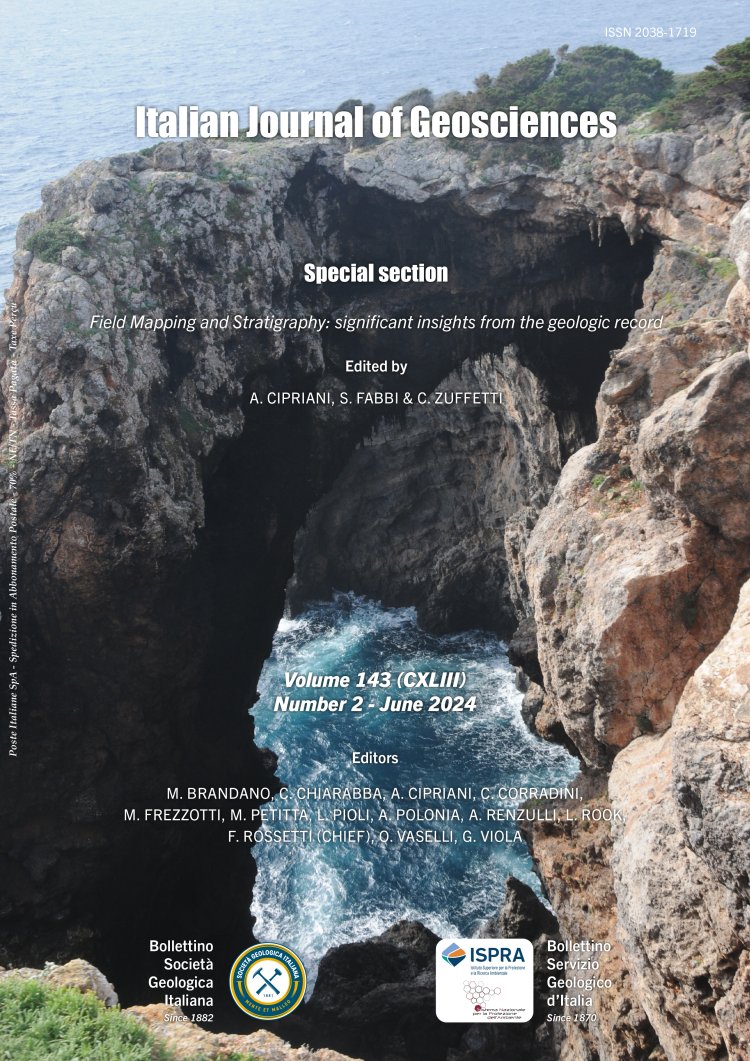
The stratigraphy of seep-impacted sediment in the Verghereto marls (Santa Sofia, Italy): insights into the Late Miocene evolution of the Romagna foredeep
Stefano Conti1, Daniela Fontana1, Paolo Serventi1 & Chiara Fioroni1
1Dipartimento di Scienze Chimiche e Geologiche, Via Giuseppe Campi 103, 41125, Modena (Italy).
Corresponding author e-mail: stefano.conti@unimore.it
Volume: 143 (2024) f.2
Pages: 289-298
Abstract
The paper focuses on the stratigraphy of the upper portion of the Verghereto marls cropping out in the S. Sofia area of the Northern Apennines in order to highlight the evolution of the Middle Miocene Romagna foredeep. The examined succession is mainly composed of quite homogeneous and structureless marls with a fining- upward grain-size trend. The upper portion of the Verghereto marls hosts numerous bedding-concordant seep- carbonate bodies, aligned parallel to the tectonic contact with the overlying Ligurian and Epiligurian units. The biostratigraphic study indicates an age spanning from the late Serravallian (MNN7) to early Tortonian (MNN8). This new dating completes the previous studies on adjacent outcrops and constrains the age of the Ligurian emplacement in this area. The examined Verghereto marls represents the sedimentation on a structural high (the Verghereto high) characterised by hemipelagites, fine-grained turbidites and seep-carbonates associated with sedimentary instability. Moderate sediment instability of fine-grained deposits is confined to the temporary slopes of the structural high, triggered by methane-rich fluid expulsion exploiting structural elements of the ridge, rather than to gravitational emplacements from more internal areas. During the lower Tortonian, the fine-grained sedimentation draping the Verghereto high ended, interrupted by the emplacement of the Ligurian-Epiligurian overthrust.
Keywords
Get Full Text